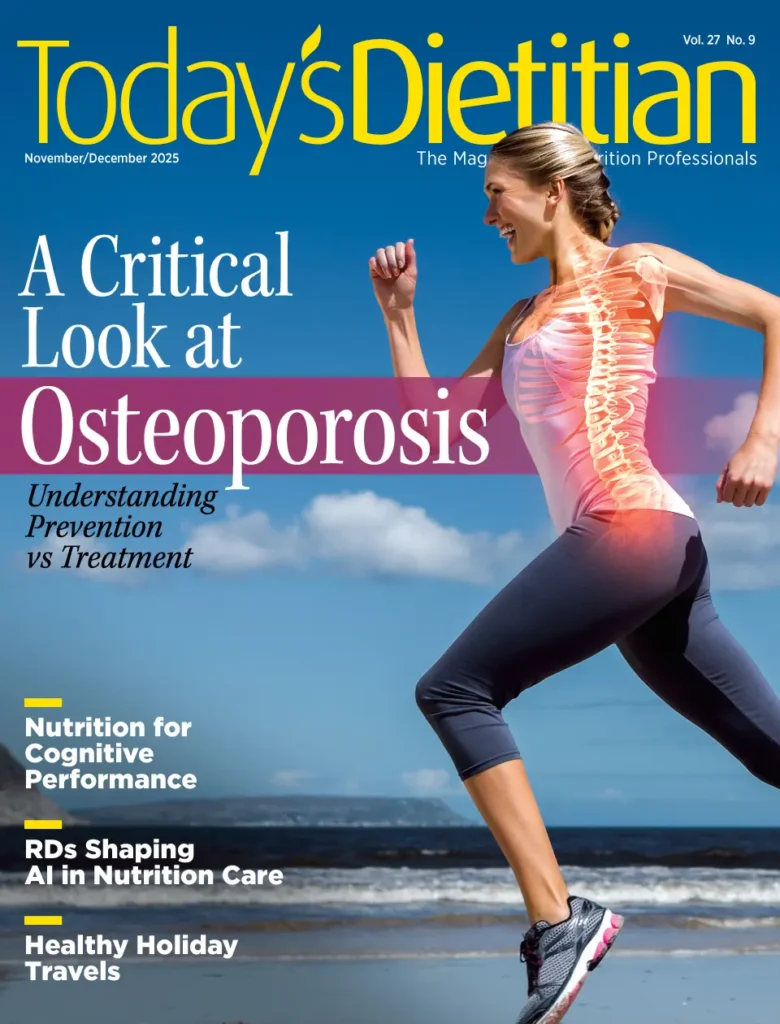Today’s Dietitian
Vol. 21, No. 3, P. 8
Q: What’s behind the trend of cricket-based foods, what are their purported benefits, and should I recommend cricket protein to my clients?
A: Cricket protein foods slowly have been carving out their niche in the market. Cricket protein manufacturers tout the sustainability of the insect to feed the growing population. By 2050, the world population will increase to 9 billion people. This means that current food production will need to double to feed everyone. Edible insects are a traditional part of the diet of at least 2 billion people worldwide.1 While many clients may be reluctant to try cricket-based foods, they can be a source of protein and other important nutrients.
History and Practices
Entomophagy, or the practice of people eating insects, dates back to the 8th century BC. The first reference to entomophagy in Europe was in Greece, where cicadas were considered a delicacy. Entomophagy is practiced globally, the most commonly eaten insects being beetles (31% of total insects consumed); caterpillars (18%); bees, wasps, and ants (14%); and grasshoppers, locusts, and crickets (13%).
In North America, Mexico is the largest consumer of insects, including grasshoppers, agave worms, and bees. Those in some European countries eat caterpillars, bee larvae, crickets, and flies, as well as cazu marzu cheese, which is made with live insect larvae. People throughout Southeast Asia consume crickets, wasps, bee larvae, grasshoppers, ant eggs, silkworms, cicadas, locusts, centipedes, dragonflies, and scorpions.1
Nutrition and Sustainability
Crickets are a source of essential nutrients, including protein and fiber. Per 100 g (3.5 oz), crickets provide 120 kcal and 8 to 25 g protein.2 Chitin is a nitrogen-containing polysaccharide that makes up the exoskeleton and is a prebiotic fiber in crickets. Whole crickets often are ground and sold as cricket flour, which is composed of 60% to 75% protein and 7% to 20% fat.
Besides its nutrient density, 80% of the live weight of crickets can be consumed.3 In addition, crickets reproduce rapidly, with some species laying 1,200–1,500 eggs within 30 days. As insects reach their adult stages quickly, they can reproduce sooner than livestock. In terms of sustainability, insects reportedly emit far fewer greenhouse gasses and far less ammonia than cattle or pigs and require much less land and water than many livestock. What’s more, insects can be consumed whole or processed as a powder or paste.1
In the United States, cricket farms and farmers are in demand. A website called Tiny Farms seeks small cricket farmers with the goal of making it easy and commercially viable to raise crickets for food.
Products
The following are a few examples of cricket-containing foods, but a wide range of flours, bars, chips, and other snacks are available as well, primarily online:
• Exo Protein produces cricket protein bites in Maple Cashew, Nutty Chocolate, and Apple Cinnamon, while the bars are available in varieties such as Banana Bread, PB & J, and Blueberry Vanilla.
• Bitty sells cricket flour and Chiridos, a type of chip made with cricket flour. The flour contains 7 g protein per 1/4 cup, while Chiridos contain 4 g protein per 1-oz bag.
• Chirps sells chips, protein powder, cricket powder, and cookie mixes made with cricket powder.
Recommendations for Clients
Crickets are a viable source of protein, and clients who wish to try various forms have many options available, though they can be pricey. However, many clients may not find cricket-based foods appealing; RDs can recommend a variety of other healthful, sustainable protein sources in these cases.
— Toby Amidor, MS, RD, CDN, is the founder of Toby Amidor Nutrition (http://tobyamidornutrition.com) and a Wall Street Journal best-selling author. Her four cookbooks are Smart Meal Prep for Beginners, The Easy 5-Ingredient Healthy Cookbook, The Healthy Meal Prep Cookbook, and The Greek Yogurt Kitchen. She’s a nutrition expert for FoodNetwork.com and a contributor to US News Eat + Run, Muscle&Fitness.com, and MensJournal.com.
References
1. van Huis A, Van Itterbeeck J, Klunder H, et al; Food and Agriculture Organization of the United Nations. Edible insects: future prospects for food and feed security. http://www.fao.org/docrep/018/i3253e/i3253e.pdf. Published 2013.
2. Churchward-Venne TA, Pinckaers PJM, van Loon JJA, van Loon LJC. Consideration of insects as a source of dietary protein for human consumption. Nutr Rev. 2017;75(12):1035-1045.
3. Tao J, Li YO. Edible insects as a means to address global malnutrition and food insecurity issues. Food Qual Saf. 2018;2(1):17-26.


